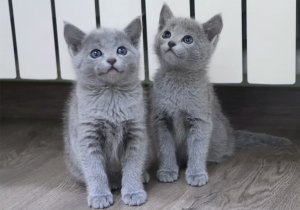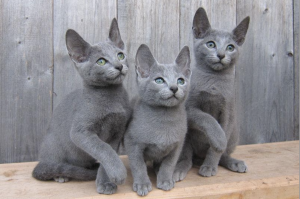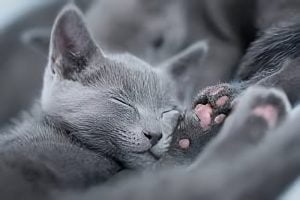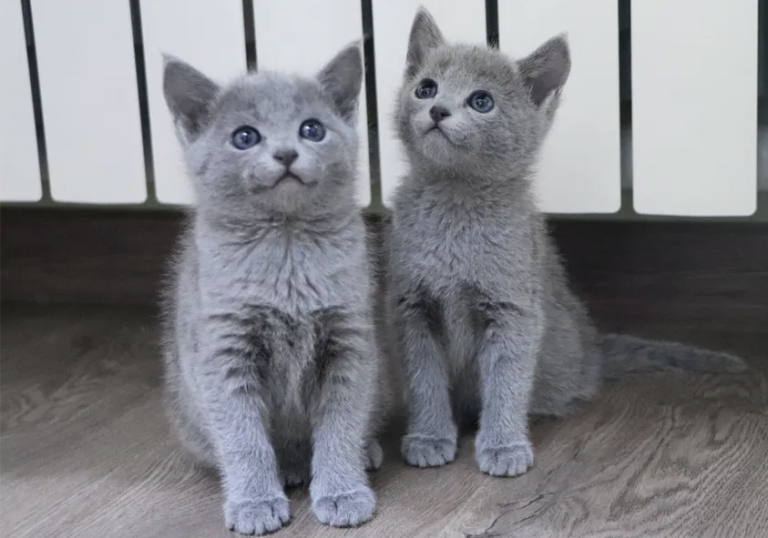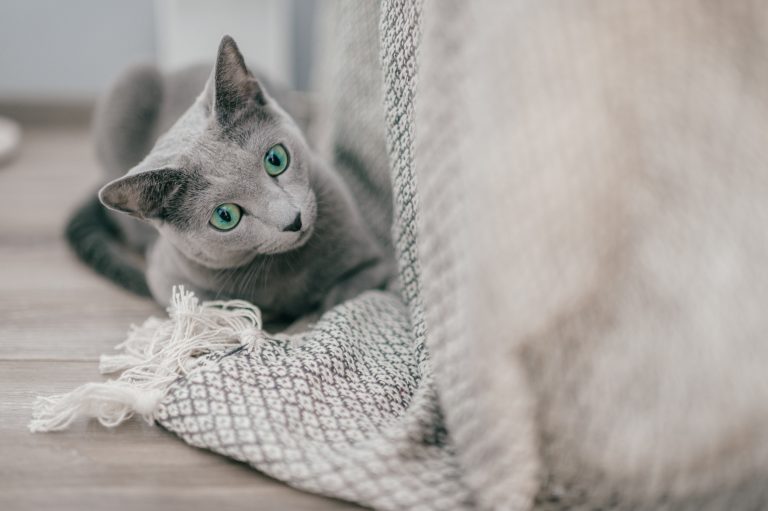Welcome to our article on Russian Blue cats! Despite being a popular breed, there are many misconceptions surrounding these feline friends. In this article, we’ll separate fact from fiction and explore some of the common misconceptions that people have about Russian Blue cats. We’ll provide reliable information to help you better understand these fascinating and intelligent creatures. So, whether you’re a current owner, a prospective owner, or just a cat lover in general, read on to learn more about Russian Blue cats!
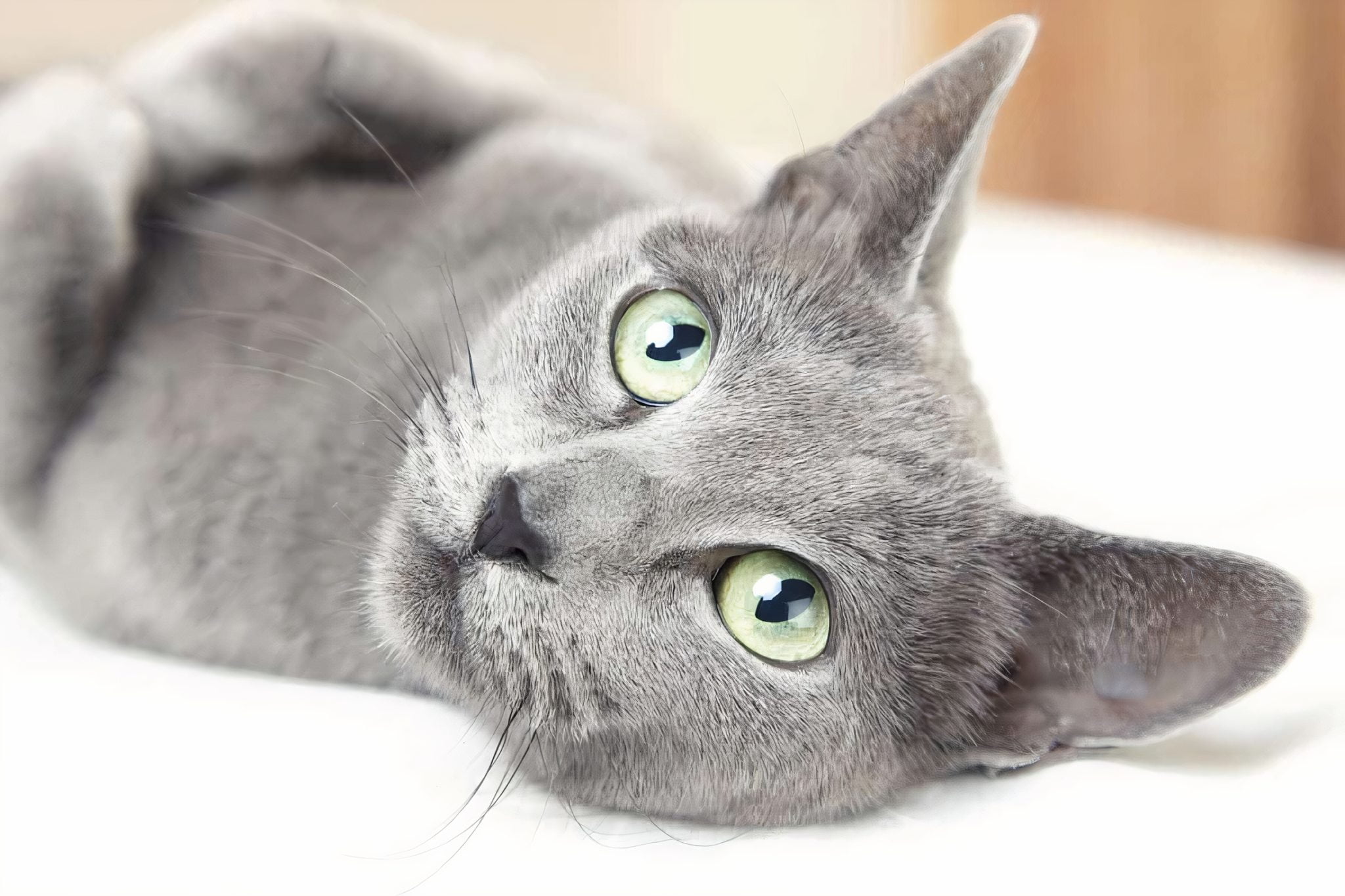
Myth #1: Russian Blue cats are hypoallergenic
One of the most common misconceptions about Russian Blue cats is that they are hypoallergenic. Hypoallergenic refers to something that is less likely to cause an allergic reaction. People believe that Russian Blue cats are hypoallergenic because they produce less of the Fel d 1 protein, which is a common allergen found in cat saliva, urine, and dander.
However, while it’s true that Russian Blue cats may produce less of the Fel d 1 protein than some other breeds, they are not completely hypoallergenic. According to the American College of Allergy, Asthma, and Immunology, there is no such thing as a truly hypoallergenic cat.
In fact, some people with cat allergies may still experience symptoms when around Russian Blue cats, such as itchy eyes, sneezing, and runny nose. It’s important to note that the severity of these symptoms can vary from person to person.
If you or someone in your household has a cat allergy, it’s recommended that you spend time around a Russian Blue cat before adopting one to see if there are any allergic reactions. Additionally, frequent grooming and cleaning of the cat’s environment can help reduce the amount of allergens in the air.
Myth #2: Russian Blue cats are always gray
Another common misconception about Russian Blue cats is that they are always gray. This misconception may stem from the fact that the breed is known for its distinctive gray coat. However, it’s important to note that not all Russian Blue cats are the same shade of gray, and some may even have a different color coat entirely.
Russian Blue cats can come in a range of shades of gray, from a light silver-gray to a deep slate-gray. In addition, their coat can have a variety of undertones, including blue, lavender, and even taupe. The coat may also have a shimmering quality, which is one of the breed’s distinguishing features.
It’s worth noting that some Russian Blue cats may have white fur on their chest or belly, which is known as a “locket” or “medallion.” While this is not a common trait, it is still recognized by some cat registries.
In rare cases, Russian Blue cats may have a different color coat entirely, such as black or white. However, these cats would not be recognized as true Russian Blues by most cat associations.
In summary, while the Russian Blue cat is known for its gray coat, the breed can come in a variety of shades and undertones. If you’re interested in adopting a Russian Blue, it’s important to keep an open mind about their potential coat colors.

Myth #3: Russian Blue cats are rare and expensive
Another misconception about Russian Blue cats is that they are rare and expensive. This idea may stem from the fact that Russian Blue cats were once a less common breed, but today they are readily available from reputable breeders and shelters.
While it’s true that some Russian Blue cats can be expensive, this is not always the case. The cost of a Russian Blue cat can vary depending on a number of factors, including the cat’s age, breeding, and pedigree. However, in general, Russian Blue cats are priced similarly to other purebred cats, such as Siamese or Persians.
In addition, Russian Blue cats can be found in many animal shelters and rescue organizations. Adopting a cat from a shelter or rescue can often be a more affordable option than purchasing a cat from a breeder. Additionally, adopting a cat from a shelter can be a rewarding experience, as you’ll be providing a loving home to a cat in need.
In summary, while Russian Blue cats may have once been considered a rare and expensive breed, they are now widely available from reputable breeders and shelters. The cost of a Russian Blue cat can vary, but they are generally priced similarly to other purebred cats. If you’re interested in adopting a Russian Blue, consider checking your local shelters and rescue organizations first.
Myth #4: Russian Blue cats are aloof and unfriendly
Another common misconception about Russian Blue cats is that they are aloof and unfriendly. This idea may stem from the breed’s reputation for being reserved and independent, which can be misinterpreted as unfriendliness.
However, in reality, Russian Blue cats are affectionate and loyal companions. They may be initially reserved with strangers, but they often form strong bonds with their owners and are known for their playful and curious personalities.
Russian Blue cats are intelligent and highly trainable, making them great pets for those who enjoy teaching their cats tricks or playing games with them. They also tend to be quiet cats, making them a good choice for apartment living.
Many Russian Blue owners report that their cats enjoy cuddling and snuggling with them, and are often found following their owners around the house. Some Russian Blue cats even enjoy playing fetch or other interactive games with their owners.
In summary, while Russian Blue cats may appear aloof or reserved at first, they are actually affectionate and playful companions. If you’re looking for a cat that is intelligent, trainable, and loyal, a Russian Blue may be a great choice for you.
Myth #5: Russian Blue cats are difficult to care for
The final myth surrounding Russian Blue cats is that they are difficult to care for. This misconception may stem from the breed’s reputation for being sensitive or high maintenance, but in reality, Russian Blue cats are generally easy to care for.
One reason why people may assume that Russian Blue cats are difficult to care for is that they have a reputation for being prone to certain health issues. However, like any breed, Russian Blue cats can be healthy with proper care, such as regular veterinary check-ups, a balanced diet, and exercise.
In terms of grooming, Russian Blue cats have a short, dense coat that requires minimal maintenance. They do shed, but not excessively, and brushing once a week can help keep their coat shiny and healthy.
Russian Blue cats are generally clean animals, and they often groom themselves like other cats. Providing them with a clean litter box and fresh water is all that’s required to keep them happy and healthy in terms of their hygiene.
Another aspect of caring for Russian Blue cats is providing them with enough mental and physical stimulation. These cats are highly intelligent and curious, and they enjoy having access to toys, climbing structures, and other forms of enrichment. Making sure your Russian Blue has plenty of opportunities to play and explore can help prevent boredom and destructive behavior.
In summary, while Russian Blue cats may have a reputation for being difficult to care for, they are actually quite low-maintenance. With regular veterinary care, a balanced diet, and exercise, they can be healthy and happy pets. Providing them with toys and other forms of enrichment can help keep them mentally stimulated and engaged.
Conclusion
In conclusion, Russian Blue cats are a beloved breed, but they are also surrounded by many misconceptions. We’ve addressed some of the most common myths about Russian Blue cats in this article, including the ideas that they are hypoallergenic, always gray, rare and expensive, aloof and unfriendly, and difficult to care for.
We’ve provided evidence to refute these myths and offered accurate information about the temperament, coat colors, cost, and care of Russian Blue cats. Despite the misconceptions, Russian Blue cats are affectionate, intelligent, and playful companions that can make wonderful pets for the right owner.
If you’re interested in adopting a Russian Blue cat, we encourage you to seek out accurate information and to spend time with the breed before making a decision. Whether you’re a current owner, a prospective owner, or just a cat lover in general, we hope this article has helped to separate fact from fiction and to provide a better understanding of these beautiful felines.

